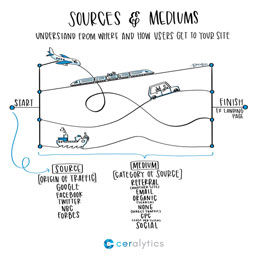After some real-life experience creating buyer personas, we asked our Chief Strategist, Brandon Andersen, how he approached this kind of audience research for Ceralytics (this is part 1 of a 2 part blog post)
Q: What was your experience or knowledge of buyer personas before you began the process?
A: I had created user personas while in product development years ago, and that was an eye opening experience. Similar to buyer personas, it got to what people’s goals are – and often what we thought were people’s goals were simply a conduit to something else. People who said they wanted a certain report didn’t actually want the report, they wanted to have something that proved to their boss that their strategies were working. Knowing that, we were able to revise the reports to better suit the actual goal of each user.
Q: What other types of audience research have you executed in the past? What were the outcomes?
A: Over the years, I’ve had the opportunity to do all types of audience research from anonymous surveys to phone interviews to in-person focus groups, you name it. Each type has unique strengths and weaknesses. Surveys allow you to get a broad swath of feedback, but they don’t enable you to ask customized or probing questions that dig down into the issues that matter for specific people. Phone and in-person feedback is great at capturing those deeper insights but, as a marketer, you’re very limited in terms of time and resources to get a large number done. For me, a blend of surveys and conversations seem to perform best.
Q: What templates or tools did you explore?
A: There are a lot of buyer persona templates out there, so you may need to do a bit of research to find one that best fits your business. We found some great ones that I then replicated in Google Sheets and tailored our unique needs. The final product ended up including headshots, titles, motivations, objectives, and direct quotes from some of the people I interviewed for each persona.
Q: What was the most helpful article you read on the topic?
A: Actually, it was a book on user testing. User testing, user personas, and buyer personas all have a common thread. A person wants to reach a goal. Your job is to fulfil that goal while taking as much crap out of the way as you can. The book is by Steve Krug called “Rocket Surgery Made Easy.” (Yes, that’s the actual title!)
Q: What advice would you give a marketer who was creating buyer personas for the first time?
A: Don’t make assumptions! Talk to real people and get real feedback! In my product development days we had the assumption that everyone used our tools in the same way, so we built our products all around that one persona. After I did a round of research with just 20 people, FIVE different personas emerged. Each persona used the tool in a very different way and for a different reason. Buyers are the same – each is buying your product for a specific (potentially different) reason. Find out what that need is, then market to it for each unique persona.
Q: What would you do differently if you had to do it all over?
A: I would definitely have begun the process earlier and gotten a larger mix of survey and in-person results.
Q: Why do you think buyer personas are important?
A: If you don’t know your buyer, then who are you marketing to? In my experience, you are probably marketing to yourself – which is a big mistake, but can be easily rectified with a little audience research.
If you don’t know your buyer, then who are you marketing to? Share on X
Read part 2: Using buyer personas to understand the impact of audience insights


